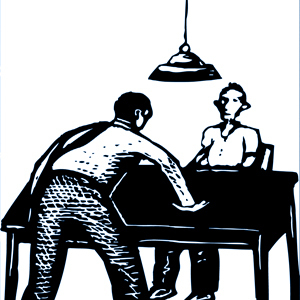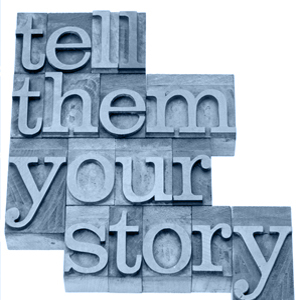Andy Paul's Blog, page 100
April 14, 2015
Do You Train Your Customers To Expect A Discount?
 Too many sellers inadvertently train their customers to always expect a discount. And the finger of blame for this is invariably pointed at the sales rep.
Too many sellers inadvertently train their customers to always expect a discount. And the finger of blame for this is invariably pointed at the sales rep.
It certainly is easy to blame the salespeople for rampant discounting. They seem like the obvious culprit. But it has been my experience that the responsibility for over-zealous discounting, and the resultant price and margin erosion, primarily rests with management.
The easiest way to look at this issue is to think of it as a problem of surplus. What happens when a manager is confronted with a surplus of inventory sitting unsold on their shelves? The knee-jerk reaction is to resort to “sales” or “special incentives” to move the product.
Similarly, when a manager has a surplus of salespeople who are not hitting their numbers (which means that the manager isn’t hitting her or his number either and their bonus is at risk) the first resort for many managers is to authorize their salespeople to offer a discount to a customer to help accelerate the close and win the order.
All parties involved in a sales transaction, buyer and seller, are familiar with this cause and effect scenario. Salespeople wait for it. If they are in a tough competitive situation and unable to sell on value, sales reps will default to a price sale by telling prospects that if they wait until the end of the month, they can get them a better deal on pricing.
And, your customers wait for it because you, via your sales team, have trained them to expect a discount in return for orders placed at the end of a month or quarter. It is not an accident that the trajectory of orders during a quarter often trace the familiar hockey stick shape. It’s because sellers and buyers alike are familiar with the rules and are in on the game together.
The problem with this end of period discounting is that these “one-time” discounts often morph into the new default price point for your customer. If you’re handing out discounts at the end of a quarter like Halloween candy to induce customers to close an order or accelerate a delivery, then there is a very high probability that your next order from that customer is going to be at the new lower price point you just established with the discount.
Try telling a customer that you only gave them a discount in order to get their before the end of the month or quarter and you’ll soon find that all your orders from that customer will only materialize at the end of your month or quarter.
As a manager, to effectively address this discounting problem you need to develop a plan to reduce these surplus factors in your selling. That starts with consistently working with and educating your sales team to improve their skills and capacity for selling value.
Commit to Consistent Product & Customer Training
Learning to sell value is next to impossible unless a sales rep possesses a true understanding of your product and service and how customers derive value from using them. Does your current training accomplish that?
Here are a few recommendations for your training program:
1. Set aside at least 20 minutes in every sales meeting for product & customer training. Don’t waver from this. It will take some preparation on your end but you can’t let that deter you from making training a regular feature of your sales meetings.
2. Invite internal product experts to be your faculty. Don’t attempt to teach this yourself. Use the experts from within your company to teach your team. They have more knowledge and credibility than you do.
3. Have your customers participate. Invite one customer per month to join a sales meeting via Skype and let your sales team interview them. Have your salespeople ask the customer questions about why they chose your product, how they are using it and the value they are receiving from using it.
4. Continually test. Don’t wait until you turn your salespeople loose on the customers to find out if they are learning from the training. Test their knowledge after every training session.
Value Planning for Sales Interactions
Along with training, as a manager you also have to make sure that every sales touch your sales team executes is planned to deliver maximum value to the prospect. Salespeople can’t operate on autopilot. Every sales interaction needs to be planned.
This means that every customer interaction needs a goal and a planned outcome. The goal must be defined in terms of the value that will be delivered to the prospect and the planned outcome is the next step(s) the prospect will take as a result of receiving the value. The value to be delivered will be in the form of information, insights, questions, context and data that helps the prospect move at least one step closer to making a decision.
Lastly, it is not enough to train sales people to become better value sellers if you, as the manager, do not change your own behaviors. In addition to helping your salespeople become more effective value sellers, you need to break their discounting habit.
Unfortunately, going cold-turkey is the only effective method to curtail the practice. It may take one or two challenging months to flush the temptation out of your system and re-train your salespeople, prospects and customers. However, you will learn which customers are buying your product for the value versus the discount. These are the customers on which you’ll want to focus going forward.
The post Do You Train Your Customers To Expect A Discount? appeared first on Andy Paul | Strategies to Power Growth.

April 10, 2015
Sales Tip Video: The First Seller With The Answers Wins
Busy customers want to make good decisions faster. They depend on salespeople to help them achieve that goal. And, the first seller to be completely responsive to the buyer’s requirements for information positions herself or himself to win their business.
That’s what I wrote about in my first book: Zero-Time Selling. The most successful salespeople are those who use responsiveness to continually reduce the amount of time required to move a sales lead, or prospective prospect, from their point of initial interest to an order.
This means that every person-to-person interaction between a salesperson and a customer requires the salesperson to deliver tangible value that enables the buyer to move closer on least one step closer to making a decision. All in the least time possible.
Watch this video to learn about how you can create a competitive advantage by being the first seller with the answers.
// ]]>
The post Sales Tip Video: The First Seller With The Answers Wins appeared first on Andy Paul | Strategies to Power Growth.

April 8, 2015
Responsiveness In Sales Is About More Than Being Fast
 What does it mean to be responsive? First, I will tell what it doesn’t mean. “Responsive” doesn’t mean fast.
What does it mean to be responsive? First, I will tell what it doesn’t mean. “Responsive” doesn’t mean fast.
Responsiveness in selling is composed of two inseparable elements: value and speed. They both need to be present to be responsive. Take away one element and you are no longer responsive. Imagine that responsiveness is a molecule like H20 composed of two elements; hydrogen and oxygen. Take away the H2 (two hydrogen atoms) and you just have O (oxygen.) Oxygen is great for breathing but it’s not much use for quenching your thirst.
Similarly, if you are fast to respond to your prospects, but cannot deliver the value (i.e. information in the form of things such as data, insights, questions, context, use cases, ROI and others) that they need to move forward in their buying process, then you are not being responsive. Being fast is good for gold medals. But, in the absence of value, speed is not a virtue in sales.
Your responsiveness, or lack thereof, is often your prospect’s first experience dealing with you and your company. What do you want your buyer’s first perception of you, your product and your company to be?
Responsiveness is an absolute value.
You either are or you aren’t. You can’t be sort of responsive. Customers are acutely aware of responsiveness in sales. Unfortunately, they aren’t on the receiving end of it very often. But, what will happen to your sales results when you condition your customers to expect absolute responsiveness from you?
For a salesperson, responsiveness becomes a key competitive advantage in a commodity oriented world. Customers experience from the first sales touch the value of working with your company. Use responsiveness to help your prospects move through their evaluation and decision making process faster. The competitors that don’t keep up with you will quickly find themselves fighting for second place. And, as everyone in sales knows, you don’t earn commissions by finishing second.
How can you incorporate absolute responsiveness into your selling?
1. Make responsiveness a priority. It has to become a habit. Every time you engage with a prospect you need to be focused on the importance of providing the higher level of sales service and responsiveness that will enable them to move more quickly through their buying process.
2. Execute a Value Plan for every sales touch. Responsiveness is about time and value. Thus, you need to be certain that you are providing value for the time the customer is investing in you. This means that every interaction with a prospect needs a Value Plan. A Value Plan has two components. The first is a Goal that is defined in terms of the value that you will deliver that will help the prospect move at least one step closer to making a decision. The second is an Outcome that is defined in terms of the next steps the customer will commit to take as a result of the receiving the value you delivered.
3. Create metrics for your key sales processes. You have to measure your level of responsiveness. If you aren’t measuring it, it isn’t happening. Take the first step and establish metrics for all of your key customer facing sales activities. I recommend that you start with your simple sales processes first. For instance, how long should it take you to follow-up a sales lead? How long should it take to respond to a buyer’s email or voice mail message? Measure how long it takes you now. Then define a metric that is your goal for fine-tuning your process and improving upon that metric.
4. Continually acquire more expertise about your products and your customers. A customer’s buying process is nothing more than an organized search for the information they need to make a well-informed purchase decision. With market research showing that customers want to make purchase decisions faster, your responsiveness will depend on your ability to quickly provide the answers the prospect requires. A responsive sales rep can’t just be the traffic cop routing internal knowledge resources to the buyer. You need to be able to deliver value of your own to your customers. This means setting aside time on a consistent schedule in your calendar to learn more about the products you sell and how your customers are using them to achieve their desired outcomes.
Don’t fall victim to the epidemic of poor responsiveness in sales. It’s important to be aware of just how essential the buyer’s perception of your responsiveness is to your ability to win their business. If you value responsiveness, then it will quickly become apparent to your prospect that you do. And, it will give you the edge that will help you rise above your competitors.
The post Responsiveness In Sales Is About More Than Being Fast appeared first on Andy Paul | Strategies to Power Growth.

April 7, 2015
Sales Hiring Tip: How To Turn Reference Checks Into Valuable Data Points
When do you usually check the references for a sales candidate you want to hire?
 If you’re like most sales hiring managers, you’re going to make that reference call after you’ve decided which candidate to hire.
If you’re like most sales hiring managers, you’re going to make that reference call after you’ve decided which candidate to hire.
Which is completely backwards from how you should do it.
Think about the typical sales hiring process. You post an open position and do a preliminary screening of candidates based on a resume review. You develop a small pool of potential candidates and conduct preliminary interviews via a voice or video call.
From that list you bring in a smaller number of candidates for in-person interviews. From those interviews you decide that two or three candidates are worthy of deeper consideration and they are brought back to be subjected to a series of interviews with a range of people throughout your company.
At that point one candidate stands out from the rest and the internal decision is made to offer the candidate the job, provided his or her references don’t reveal any adverse data. Unfortunately, too many sales managers make conditional offers to sales candidates before references are ever called.
Do you make up your mind to hire someone before you check their references?
Here is the problem: If you’re like most hiring managers, you check that candidate’s references only AFTER you have decided to hire him or her. Isn’t that just a little backwards?
After all, what is the point of conducting reference checks AFTER you’ve developed an emotional stake in a particular candidate? At that point if you hear something negative from a reference about you’re favored candidate, you’re likely to discount it.
Shouldn’t reference checks, instead, be one of the most important data points that are factored into the hiring decision before it is made? In which case, you have to call references before you’ve made a decision about which candidate to hire.
Think about checking references like qualifying a potential prospect. When do you qualify a prospect? At the beginning of your sales process or at the end of it?
Do you invest a substantial amount of your sales time with a potential prospect before you qualify them? Of course you don’t. You know that it is essential to qualify a prospect at the beginning of the selling process. Not only to ensure that they are a fit for your product and service, but to make certain that they’re worth the investment of your limited selling time.
Why don’t you hire salespeople the same way? Check a candidate’s references near the beginning of the interview process. If you are rigorous in the questions you ask in a reference check, then this will help you to weed out candidates that might otherwise slip through.
Here are a few recommendations to upgrade your process for checking references.
Conduct Reference Checks on Your Final Three Candidates
Take the time to thoroughly check out the references (and qualifications) of each of your finalists before you invest the time and manpower to bring them in for their wider interviews. It is extremely important to take this step before you have fallen in love with one particular candidate and become blinded to any of their potential shortcomings.
Ask Questions That Require Factual Answers
Don’t rely solely on questions that require subjective opinions for answers. Ask questions that require factual answers. For example, your candidate states on his resume that he achieved 120% of quota last year. Ask the reference he provided to verify that fact with a simple “yes” or “no” answer. Perhaps a candidate claimed that she made President’s Club for 3 years in a row. Ask their reference if that is correct. If a candidate has misrepresented the facts of their track record, then that is disqualifying data.
Ask Questions About Capabilities
The problem with asking questions of references that require subjective answers is that past employers are increasingly leery of saying anything beyond confirming that the candidate worked at their company. A great question to ask a reference is “What advice would you give to John’s boss?” (with John being the name of your candidate.) This appears to be a very neutral question on its surface, and yet it often provokes deceptively perceptive answers about the areas where your candidate needs development. And it opens the door to more in-depth follow-up questions with the reference.
Hiring salespeople is a risky business in the best of circumstances. Why make it harder, and riskier, than it needs to be? Use reference checks as a tool to qualify candidates for a position instead of a just a pro forma part of your due diligence after the fact.
// ]]>
The post Sales Hiring Tip: How To Turn Reference Checks Into Valuable Data Points appeared first on Andy Paul | Strategies to Power Growth.

April 6, 2015
Use Simple & Compelling Sales Stories To Answer “What Do You Do?”
 “What do you do?”
“What do you do?”
This is one of the questions that salespeople are most frequently asked.
You’d think that it would be the easiest question for them to effectively answer. But salespeople have been misled by trainers who have told them to create an “elevator pitch” to answer it. An elevator pitch is usually an unsuccessful attempt to cram into sixty seconds every relevant fact about your company and the products you sell.
The problem is that elevator pitches are not designed to answer the question that the potential prospect is really asking. When someone asks “What do you do?” what they really are asking is “What can you do for me?”
If a prospect asks “What do you do?” and you jump right into your elevator pitch, then you aren’t delivering information that is of any value to them.
Instead of a pitch, what this situation demands is a simple sales story. Great sales stories illustrate the defining moments that your existing customers have experienced with your product or service that best communicate your value proposition.
In turn, the value of a sales story, built according to the instructions I provide below, is that it tells the potential prospect what you do by relating the story of how your company/product/service helped one of your current customers solve their problem and the tangible value they received from working with you.
The power of sales stories is that they put your prospects in the picture. When they hear your story they will picture in their minds what it would be like if they were the one using your product or service. They will be taking a mental test drive of your product or service. What your prospect will remember is how you helped to solve the problems of a company just like or similar to their own.
Follow These Steps To Write Effective Sales Stories
1. Choose Which Customer Stories To Tell
Look through your existing customer base and select 4-5 customers that have successfully deployed your products or services. Make sure that they represent a cross-section of the customer types that you work with because you are going to need multiple sales stories.
2. Answer These 4 Simple Questions About Each Customer
Answer these four simple questions for each customer you chose:
1. What problem was the customer trying to solve?
2. Why was your expertise relevant to the customer? (What in your track record spoke to the customer’s requirements?)
3. Why did the customer order from you? (Why did they choose you instead of the competition?)
4. What value has the customer received from your product/service? (What measurable value and outcomes have they received from your product/service?)
3. Write Your Story Down Word for Word
A great sales story is short and concise. To make that happen you have to write it out word for word and then edit it down to the right length. Your sales story is going to be no longer than 100 words. The average person can speak about 150 words per minute. This means that your sales story will be no longer than 30-40 seconds in length. Any longer and the potential prospect will start to lose interest.
4. Insert A Few Key Details To Draw In The Prospect
To them more relatable and memorable incorporate a few key details in your stories. Even using simple details, like the first name of the customer that is the subject of your story, makes it more relatable to listener. Instead of starting a story by saying “We have a customer…” say “Larry is VP of Ops at ABC Widgets and he had a problem with…” It is these details that draw in the listener and gets them to visualize themselves in the story.
5. Practice, Practice, Practice
Remember the old joke about “How do I get to Carnegie Hall?” The punch line is “Practice, practice, practice.” The same applies to your sales stories. They have to be memorized and rehearsed so that their telling is second nature to you. A story is the time for preparation not improvisation. Learn how to deliver your stories without the extraneous “um,” “uh” or “you know what I mean?”
Ask a colleague to listen to you tell your story. If you’re a sales manager, be sure to set aside 5-10 minutes in every sales meeting to have your salespeople practice their stories in front of their peers. Not only is it good practice, but it also enables salespeople to learn new stories that they can tell.
Now, when someone asks “What do you do?” Tell ‘em your story.
The post Use Simple & Compelling Sales Stories To Answer “What Do You Do?” appeared first on Andy Paul | Strategies to Power Growth.

April 3, 2015
Sales Tip Video: You Can’t Get A Price Objection From A Truly Qualified Prospect
Can you get a price objection from a truly qualified prospect?
When a prospect tells you that your product is ‘too expensive,’ typically what they mean is that your product is just that, too expensive for their budget. It isn’t an objection. It is a fact. They just can’t afford what you are selling, even if your product meets their needs.
There is no mystery to price qualification. It’s an important step in your sales process that can’t be skipped because you won’t have a qualified prospect until you qualify them on price.
Watch this video to learn two common mistakes you need to avoid in qualifying your prospects on price.
The post Sales Tip Video: You Can’t Get A Price Objection From A Truly Qualified Prospect appeared first on Andy Paul | Strategies to Power Growth.

March 31, 2015
Don’t Lead With A Presentation On The First Call
 Isn’t it time that you stopped using your standard corporate capabilities presentation?
Isn’t it time that you stopped using your standard corporate capabilities presentation?
The standard corporate capabilities pitch. Almost every company has one. And too many salespeople use one. A slide deck full of detailed information about your company, your management and the products, services and solutions that you sell that is almost guaranteed to invoke a sleep response in your audience. (Whatever you do, don’t dim the lights!)
I saw this recently on a ride along with salesperson for a new client. The salesperson, Eric, had just spent the previous three months trying to get a meeting with an executive, who I’ll call Mr. Smith, the CEO of a local company. And then, when Eric finally got in a room with Mr Smith, he spent 30 minutes of Mr Smith’s limited time boring him into submission with his corporate pitch. (Which was largely full of information that the prospect already had read and on the client’s website.)
Eric violated so many rules of good selling that it was hard to keep track:
Don’t waste the customer’s time. Customers are really busy. You can’t afford to waste a single minute of the customer’s time.
You must deliver value in exchange for the time the customer gives you. If you don’t give them something of value in exchange for their time, then they’re not going to give you any more of it.
Sellers must deliver value on every single customer interaction, no matter how large or small. Value in sales is any information (questions, data, insights, case studies, etc.) that moves the prospect at least one step closer to making a decision.
Don’t waste your time. Maximize the value you receive from the customer’s time. In the course of the average sales cycle/buying cycle, you will only have a small number of meaningful sales touches with the customer. You can’t afford to waste a single one.
Try these alternatives to make sure that you have a productive first interaction with the customer:
1. Set an agenda for the meeting that doesn’t include a presentation. When you get a customer commitment for that first substantive interaction, get their agreement to an agenda that is focused on discovery and coming to a clear understanding of the customer’s problem/requirements.
2. Send your standard capabilities presentation to the customer in advance of the meeting. When you set the agenda for your first call with the prospect, tell them that you are going to send your presentation to them and ask them to review it and prepare their questions ahead of your meeting. (Be sure to provide that deck using a sale engagement app like BuyerDeck or Yesware that provides analytics about how the prospect is engaging with your content.)
3. Record your standard presentation as a webinar and send the file, or a link to the file, to the prospect ahead of the meeting. Ask that they listen to it before the meeting so that you can jump right in to talking about their requirements when you meet.
4. Provide some of your key discovery questions to the prospect ahead of time. Part of your job is to help the prospect quickly navigate through their buying process to make an informed purchase decision. Your questions should provide a context for the customer to think deeply about their requirements. By giving them a guide to prepare for your meeting, you increase the probability that the prospect will see more value from their investment of time in you.
There’s no need to waste the customer’s time during that precious first call presenting “generic” information about your company and product that they can easily read on your website or review in advance of your meeting. It doesn’t help them. And it doesn’t help you.
The post Don’t Lead With A Presentation On The First Call appeared first on Andy Paul | Strategies to Power Growth.

March 30, 2015
3 Requirements To Build Lasting Customer Relationships
 Effective and durable customer relationships are like the relationship I had with Riley, my late, great Golden Retriever.
Effective and durable customer relationships are like the relationship I had with Riley, my late, great Golden Retriever.
Like any good Golden Retriever, my buddy Riley was serenely uncomplicated and ecumenical with his affections. He loved anybody who plied him with kibble twice a day, patiently tossed him his ball, told him what a good boy he was while scratching him behind his ears and consented to be dragged along on the high-speed outings we called walks.
The truth of the matter was that Riley didn’t really care who fed and walked him. Anyone that made him happy by completely taking care of his basic requirements earned his affections. That is all your customers want as well.
Customer relationships are about “Needs and Deeds”
Productive and lasting customer relationships are all about “needs and deeds.” Customers have needs. And their relationship with you extends only to the degree that you meet and exceed those needs with your deeds.
Like our canine companions, customers have developed a simple Hierarchy of Needs for their relationships with sellers:
1. Help me solve my problems with timely, insightful and accurate information to make informed purchase decisions;
2. Live up to your promises and completely deliver on your commitments;
3. Support me without condition.
And, just like Riley, customers really don’t care who meets their needs. It could be you. Or it could be the sales rep from your prime competitor. Customers may “like” you but they don’t care about you. Customers only care about what you have done, and can do, for them.
If you aren’t there to meet their needs the customer will quickly forget that you exist. Who has ever had to leave a beloved dog to go off to college or move away from home? You know your dog loves you, absolutely loves you, loves you completely, until the car taking you to the airport disappears around the corner. At which point they will have largely forgotten about you and bonded with the new person supplying the kibble and the walks. Your customers are the same way
3 Tips to Build Lasting Customer Relationships
1. Treat your prospects and customers as you would wish to be treated.
Ask yourself this question: If you were a customer of your own company, what would you expect the customer experience to be? How would you wish to be treated by your own sales and support people? That should be the minimum standard of care that you provide to your own prospects and customers. This is easy to start but demanding to continue. It starts with a CEO and senior management committing to making the customer their top priority.
One of my CEO clients was a very demanding consumer. That was his right. In fact, it was often stressful to go to restaurants with him because he demanded perfection in the food and service and was not bashful about sending dishes back to the kitchen. Yet, when it came to his own customers, he was defensive about his products and adopted a minimalist approach to customer service, making it a challenge for customers to get the support they needed. It took a long time to help him recognize and acknowledge the inconsistency between the service he expected when he purchased a product and the way he treated his own customers. Only then did he start earning the repeat business he needed to build his business.
2. Delight your customers with your commitment to customer service.
Commit to being completely responsive to your customers’ requirements for support both in the pre-sales and post-sale. The first step to take internally is to eliminate the distinction in your company between pre-sales and post-sales support. All support is pre-sales. As soon as a customer gives you an order, all of your support should be provided with the goals of a) having a satisfied customer that will give you their next order and b) receiving a great referral to another potential customer. That is building the relationship with your customer. And, isn’t that the best motivation for providing great support?
Another of my clients had a simple escalation procedure in place for all calls into sales and support. All calls to sales and service were to be answered by a live person. If the front line sales or service tech were not available, the call was bumped to a manager. If the manager was busy the call was routed to a VP and then up to the CEO. The CEO routinely answered calls from customers. He never identified himself by other than his first name to customers when he helped them. Imagine how powerful that was for customers to learn later that the CEO had so humbly helped them without drawing attention to himself.
3. Demonstrate your appreciation for the opportunity to serve your customers.
With Riley this is as easy as scratching his head and telling him “Good boy.” Customers may not welcome the physical contact but they always like to hear that you appreciate the opportunity to earn their business.
You’ll notice I didn’t say that customers like to hear that you appreciate their business. I’m sure they do. But I learned a lesson a long time ago from a customer of mine that what they really want to hear is that you are going to work hard every day to continue to earn the right to win their business.
Demonstrate by your words and deeds that there is no danger of you becoming complacent and taking your customers for granted.
The post 3 Requirements To Build Lasting Customer Relationships appeared first on Andy Paul | Strategies to Power Growth.

March 27, 2015
Sales Tip Video: Should You Hire Generalists or Specialists?
In my 30+ years of sales management experience I’ve never once had a customer call me to complain that one of my salespeople, a technical salesperson with strong product or industry expertise, didn’t know enough about how to sell. So, could I please send someone over to talk with him who was more “salesy?”
However, I have had prospects call me to complain that one of my sales reps didn’t know enough about their business, or about our products, to deliver sufficient value to help them quickly navigate their buying process. So, unless I wanted them to take their business elsewhere, I needed to send over someone who knew what they were talking about.
Watch this video to learn the two outdated beliefs that prevent managers from hiring the salespeople who can best help their prospects to make fast, favorable decisions.
The post Sales Tip Video: Should You Hire Generalists or Specialists? appeared first on Andy Paul | Strategies to Power Growth.

March 25, 2015
The Most Powerful Lessons a Salesperson Should Learn
“I learn something new everyday. But, even more importantly, I learn the same things over and over again.”
 I was immediately struck when I heard these words. They were spoken by a world-renowned physician and neuroscientist, Dr. Steven Galetta, in his acceptance speech for a prestigious award recognizing his excellence in his profession.
I was immediately struck when I heard these words. They were spoken by a world-renowned physician and neuroscientist, Dr. Steven Galetta, in his acceptance speech for a prestigious award recognizing his excellence in his profession.
Dr. Galetta said that he was always excited to acquire some critical piece of knowledge every day that he could apply to his research and in the treatment of his ailing patients.
But, even more critical to him was the opportunity everyday to re-learn the fundamentals of his profession; namely in how he works with his patients. How to carefully listen to patients. How to how to take enough time with patients and how to ask the right questions to elicit accurate information.
I believe this is the central learning challenge for every professional salesperson and sales manager. If you want to keep your selling efforts vital and fresh, if you want to reach the heights of career success and stay there, then it is important to always be learning. But what exactly do you need to learn? What should you learn that will enable you to be even more effective in helping your customers make good decisions quickly?
Let’s use the example of Dr Galetta to set two goals for yourself:
1. Learn Something Big Everyday
As my friend Jill Konrath teaches in her new book, Agile Selling, the most important skill a top sales professional needs to master in order to succeed is that of becoming an agile learner. In that vein, create a Personal Learning Plan. Write down what you need to learn from the perspective of your customers. What are the knowledge and insights that they need from you in order to make fast and favorable decisions?
Product knowledge: What do you need to learn about the products you are selling that will enable you to better understand the problem(s) your prospects are trying to solve? Where can you acquire that knowledge? What books should you read or what internal classes could you attend?
Industry Expertise: What industry expertise should you acquire that will help you to provide necessary insights to the prospect about their business and the solution you are providing? Read books about your industry. Follow specific LinkedIn discussion groups in your target industry and read the discussion threads to learn about key industry concerns. Pick a mentor from your sales team who is successful and shadow them on calls to absorb some of their knowledge and expertise.
Customer Knowledge: Do your research into the prospect’s organization, products, and customers. Set up Google alerts for every new prospect to facilitate this. Use tools like Nimble to track the conversations your customers are having online. This can point you in the direction of new knowledge that you need to acquire.
Become A Source Of Value: The challenge you must set for yourself is the following: How do I become a source of value to my prospects and customers? How do I acquire the knowledge, understanding and insights that will enable me to become the trusted advisor that my prospects rely on to help them make purchase decisions?
Use your Personal Learning Plan to set learning goals for yourself and to commit to the specific actions you will take to acquire that knowledge. Most importantly, share your Personal Learning Plan with a manager or a peer within your company. You want their help to hold you accountable for achieving your goals. But, whatever it is, do at least one thing every single day. Even if it just reading for 30 minutes before you turn off the lights for the day.
2. Learn the Same Things Over and Over Again
This is just as important as Lesson #1.
Never assume that you have learned everything there is to know about the fundamentals of your craft. You can always ask the question better. You can always follow up faster. You can always be more responsive. You can always listen better. You can always prepare more thoroughly for every call.
Your success is more dependent on your successful execution of sales fundamentals than in mastering specialized sales skills. Why? Because if your fundamental sales skills are lacking, then you’ll never get the opportunity to show off your advanced knowledge. This is the most persistent problem I see with sales teams, whether they are a large enterprise or a small business: salespeople are slacking on the basics. Or, they are executed so poorly that they may as well be missing.
It’s the basics that shape the prospect’s perception of you. Trip up on these and you’ll lose the opportunity to build trust with the prospect.
The first step you can take to start learning the fundamentals over and over again is to turn-off your sales autopilot and start paying attention. You’re not perfect. There’s always room for improvement. Take the time to ask the right questions of your prospects and then really listen to the answer. Promptly return emails and voicemails. Responsively follow-up to questions and completely follow-through on your commitments.
Remember: learn something new and big and exciting everyday. Look at the fundamentals of your selling with a fresh eye every single day and be conscious of what you can improve in order to better serve and deliver more value to your customers. The reward will be that you’re a better salesperson. And, a better person.
The post The Most Powerful Lessons a Salesperson Should Learn appeared first on Andy Paul | Strategies to Power Growth.

Andy Paul's Blog
- Andy Paul's profile
- 4 followers





